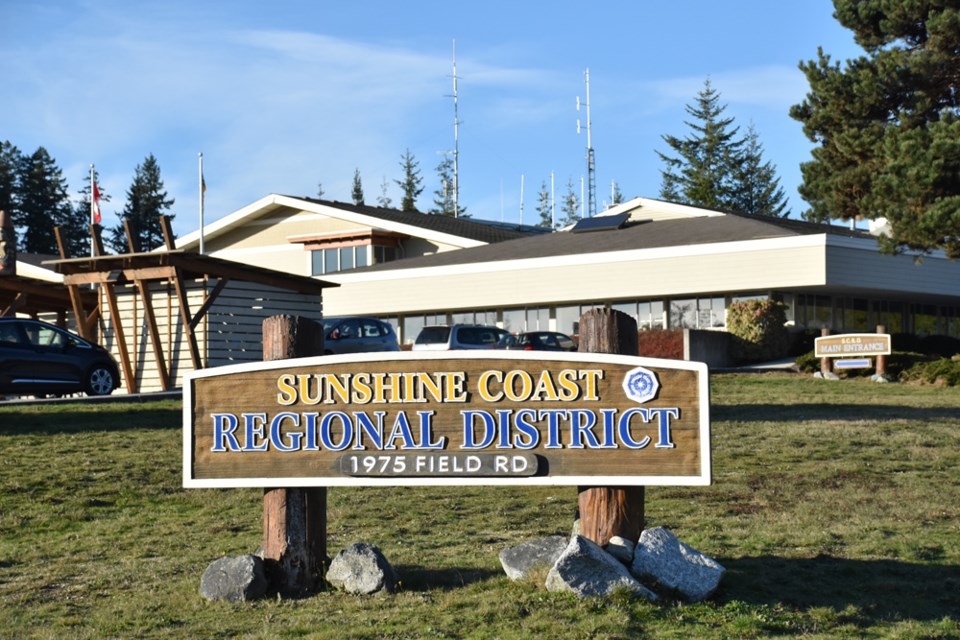The Sunshine Coast Regional District’s (SCRD) directors recommended increases to 2023 water user rates and parcel taxes in a Dec. 9 committee meeting. Those changes are slated for board consideration at a Dec. 15 meeting. To be applicable to the new year’s water bills, normally issued in mid-April, the rates require adoption before the end of 2022.
Opportunities for the public to ask questions of staff about the proposed changes and plans for SCRD water systems are set to be hosted online on the evening of Dec. 13. This is part of what staff called “a comprehensive communication effort regarding the 2023 utility rates." Details on how to participate are available at scrd.ca.
What are the proposed rates?
For the 11,803 water users of the Regional Water Service Area (SCRD water users except those connected to the North and South Pender systems), current parcel tax and user rates for single-family residential dwellings are about $832 per year. The proposed overall adjustment in 2023 is an increase of 25.39 per cent. That would bring those charges into the $1,043 annual range.
In the North Pender water service area, which has 577 water users, current rates include $341 in parcel taxes and $711 in water user rates per single-family residential property. The recommended increase for 2023 is approximately 24 per cent and would see parcel taxes going to $918 and user fees to $385 for an annual total water bill of $1,303.
The committee recommended that 2023 user fees and parcel taxes for the 1,024 water clients connected to the South Pender water service increase by 13 per cent over the current combined level of user rates and taxes of $1,057 to $1,194.
Challenges facing regional system
Most of the debate at the committee meeting focused on the regional water service area, which includes its Chapman system which has been under Stage 4 water restrictions for most of the second half of 2022.
The challenge the committee faced, according to the staff report on the matter, was setting water rates that were “appropriate and sustainable” for those paying into the system while achieving full cost recovery for the service. Along with the rate change option the committee supported for the regional system, three other funding scenarios were detailed. Those outlined how rate increases of 17, 56 and 91 per cent over 2022 levels would affect finances for the water service.
The report stated that, “In 2022 there were significant draws on both operating and capital reserves. Operating reserves went from $3.61 million to $644 thousand and capital reserves went from $9.87 million to $4.17 million.” In discussion at the meeting, chief financial officer Tina Perreault commented that the reduction in operating reserves brought them to an “alarmingly low” level. She agreed with a statement in the report that noted “the service will require significant financial investments in the years to come; therefore, it is important to strengthen both the operating and capital reserves.”
If endorsed by the board, the 2023 user rates will generate just over $8 million in revenue. After covering the year’s administrative, operating and borrowing costs of about $7.27 million, the new rates are slated to help rebuild operating reserves.
Revenue from the coming year's parcel taxes is forecast at about $4.5 million. In addition to supporting the ongoing capital program, the new rates would create a capital surplus of $794,000.
Area E director Donna McMahon posed a question she said is often heard from the public: “We’re not getting more water, why are we paying more?”
Infrastructure services manager Remko Rosenboom responded that “there is no direct alignment between payment and immediate water supply. It takes time.” He outlined that the challenges facing the water system are multiple, from under funding of assets in past years to the supply problems exacerbated by the 2022 drought and inflationary cost pressures on capital projects.
He noted that developing new ground water sources and catching up with infrastructure improvements “takes a lot of time and money." An example pointed to was the Church Road well field project. While planning for that new water source began in 2018, it is slated to be fully commissioned in early 2023.
Future outlook
Concerns were expressed by committee members that the meeting agenda was circulated only three days in advance of the meeting and the reports included contained a lot of detailed financial information. In the view of Sechelt Area director John Henderson, having the details on hand earlier would not change the decision facing the elected officials. “I don’t think we [the committee] have to spend a lot of time on the details, we have to do it [increase rates] this year and next year. Accept that rather than debate the nuances,” he said.
“Accept the reality that we need of extra sources of income to fund the reality."
He summed up his comments with an analogy that “if you buy a house and it's an old house or you let it get run down without maintenance you are faced with an obligation to come up with a lot of money in a short period of time.” He closed his comments with “let’s get into action without a lot more studies.”
It was also noted at the meeting that a staff review of water service rate structure for the water services is under way with the first results of this work anticipated to be before the board later next year. These could include options for a different rate structure, which with board approval could be implemented as early as 2025.



